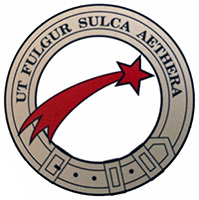
“UT
FULGUR SULCA AETHERA”
like lightning, crossing the stars

From the first days of mobilization, in August 1914, several civilian aviators voluntarily offered their services to the army with their own aircraft and equipment. Among these a Blériot XI and a Deperdussin Monocoque.
Together with some candidate pilots and observers, the ranks of the Company d'Aviateurs (Aviator Company) grew. These personnel and the equipment requisitioned or voluntarily made available to the army allowed the establishment of the 5ème Escadrille de Chasse (Fighter Squadron), also called the Escadrille des Monoplans (Monoplane Squadron), which was created in Leuven on 12 August 1914. They were tasked with aerial reconnaissance. In December 1914, the unit was at the Belgian coast where it was reinforced with a couple of two-seater Blériot XI.
With only two Nieuports and a few Bleriot XI, the squadron was temporarily disbanded in March 1915. At the end of 1915 the squadron was reactivated, again as 5ème Escadrille de Chasse and equipped with Maurice Farman MF 11bis and Nieuport X.
In June and July 1916, the squadron received the Nieuport XI.
Maurice "Teddy" Franchomme, a pilot in the 5ème Escadrille de Chasse, painted the Comet on his Nieuport XI in March 1917.
The squadron received the first Spad S.VII in 1917 and were renamed 10ème Escadrille de Chasse. The Squadron Commander asked Franchomme to give the insignia to the squadron and so, during the summer of 1917, the Comet became the insignia of the whole Squadron.
In 1919, it was even equipped with several Fokker D.VII, confiscated from the Germans.
After the armistice, the squadron moved to Bochum, in occupied Germany for some time.
In March 1920, it became part of the IVième Groupe de Chasse (Fighter Group) and became their 3ème Escadrille de Chasse in August 1923. At that time, it was equipped with Nieuport-Delage Ni D-29.
In November 1924 the IVième Groupe de Chasse became the Ier Groupe de Chasee of the 4ième Régiment (1st Group/4nd Regiment).
Two years later, in January 1926, following a further reorganisation, the number of squadrons was reduced and the squadron was renamed 1ière Escadrille de Chasse/Ier Groupe/2ième Régiment (1/I/2).
It was re-equipped with the Avia BH-21 in 1927 and with the Fairey Firefly from July 1931.
On 19 June 1937, the Belgian government ordered 22 single-seater Gloster Gladiator Mk.I fighters, hoping to manufacture more under licence. They were put into service at the 1ière Escadrille de Chasse in Schaffen. Participating in air policing missions during the mobilization period, a Gladiator patrol intercepted a German Dornier Do.17 on 20 April 1940. The aircraft was shot down and crashed on Dutch territory.
At dawn on 10 May 1940, fourteen Gladiators were lined up on the airfield. Twelve Gladiators managed to reach an emergency airfield. The 1ière Escadrille had therefore lost only two aircraft, one that was destroyed on the ground and one that was forced to land in the countryside.
The following day, 11 May, the 1ière Escadrille received the order to carry out a mission protecting the Fairey Battles of the 5/II/3, tasked with bombing and destroying the three bridges of the Albert Kanaal (Canal) that had fallen intact into enemy hands. They lost 4 Gladiators during this mission.
On the afternoon of of that same day, between 14:07 and 14:32, the airfield was the target of several attacks. Seven Gladiators were destroyed and an eighth one was damaged. Twenty minutes later, a new German attack destroyed the rest of the aircraft, except one, which was abandoned the next day, when the airfield was evacuated. The personnel was evacuated to France. After the French armistice several pilots of the 1/I/2 joined England and were incorporated into RAF squadrons.
In 1946 the 352nd Squadron was created in Florennes, attached to the 161st Wing. On 1 November 1947, the squadron became the 2ième Escadrille of the 2ième Wing de Chasse. At that time they were equipped with the Spitfire Mk. XIV. In February 1948 it was allowed to wear the insignia and motto of the World War I-era 5ième Escadrille de Chasse: a red and gold comet, formed of a five-pointed star and a three-pointed tail.
The squadron would enter the jet age in 1951 when the Republic F-84E Thunderjet entered service. These were replaced by the more advanced F-84G version in 1952.
1957 saw the the arrival of the Republic F-84F Thunderstreak. These aircraft were deployed in the tactical strike role at the start of the Cold War.
The 2ième Escadrille de Chasse received its first Mirage V-BA in 1970.
In 1988, the squadron was the first Mirage unit in Belgium to undergo the conversion to the F-16A Fighting Falcon.
Initially, the F-16A of the 2ième Escadrille de Chasse would be deployed in the same role as the Mirages in the past. : the aircraft would be deployed in the ground attack role. This role was often referred to in Belgium as the “mud-moving” role indicating that the unit specializes in low-level air-to-ground missions and interdiction. In addition to the mud moving role, the F-16s of the 2ième Escadrille de Chasse were also deployed for the air defense of the country during daylight role in case of emergency and to have sufficient intercepting resources available at all times. The 2ième Escadrille de Chasse was assigned this role alongside the 349th and 350th Squadron at Beauvechain which had the all-weather intercept role. Shortly after the Cold War, the mud-moving role became obsolete and such attacks were banned because too many accidents occurred during this type of training. From 1996, the 2ième Escadrille de Chasse, like all other F-16 units in Belgium, had to surrender six aircraft. The squadron would have a total of twelve aircraft operational and ready to serve with the Air Force and NATO. In 2001, the 2ième Escadrille de Chasse was the last Belgian F-16 unit to undergo the MLU conversion. At the end of 2001 the unit was fully operational in the MLU role with the F-16AM.
Since the 2ième Escadrille de Chasse has been flying the F-16, the Belgian government has deployed the unit several times to foreign conflict zones. Especially during the war in the Former Yugoslavia, the 2ième Escadrille de Chasse had the majority of its deployments. 2ième Escadrille de Chasse took part in the Decisive Endeavor deployment and flew from Villafranca Air Base in Italy until December 1996. This operation took place in support of UN-led IFOR troops in Bosnia-Herzegovina. From December 1996 to June 1998, this mission continued under the name Deliberate Guard. The UN troops in Bosnia and Herzegovina were given more mandate, which resulted in a name change from IFOR to SFOR. The 2ième Escadrille de Chasse also took part in the Determined Falcon deployment to Villafranca, this short operation lasted from 5 June 1998 to 16 June 1998. During this one-day operation, NATO flexed its muscles to ensure that Serbian politicians would stop the bloodshed in Kosovo. In 1999, the 2ième Escadrille de Chasse also took part in the bombing raids on Serbian targets during Operation Allied Force.
During a reorganization, named Falcon 2000 in 2001, it was decided that each wing would fly 18 aircraft per squadron because of the fact that all squadrons had a multi-role task at that time but a few months later it was decided to disband the 2ième Escadrille de Chasse despite the fact that the unit had only recently received its first MLU F-16s.
After 54 years of operational service with the Belgian Air Force, the 2ième Escadrille de Chasse was disbanded on 20 April 2001, transferring all its assets to the 1èr Escadrille de Chasse.
With the arrival of the new Remotely Piloted Aircraft System, the MQ-9B SkyGuardian, in 2024, the 2ième Escadrille de Chasse is re-activated.
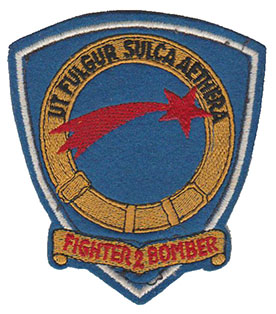
Mirage VBA version
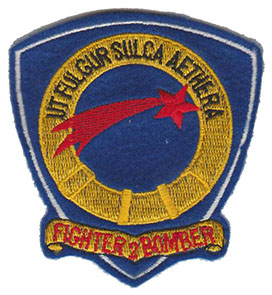
F-16A/M version
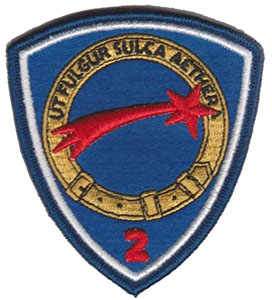
MQ-9B version
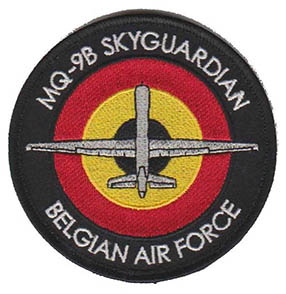
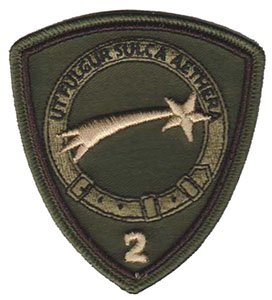
MQ-9B version
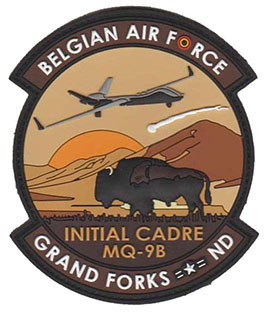

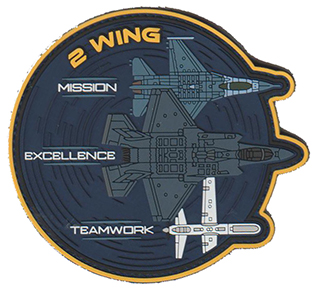
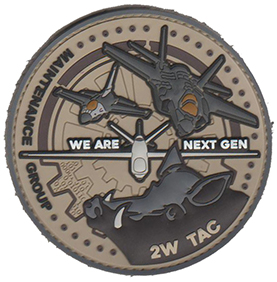
ITEMS
PICTURED ON THIS PAGE ARE NOT FOR TRADE OR SALE